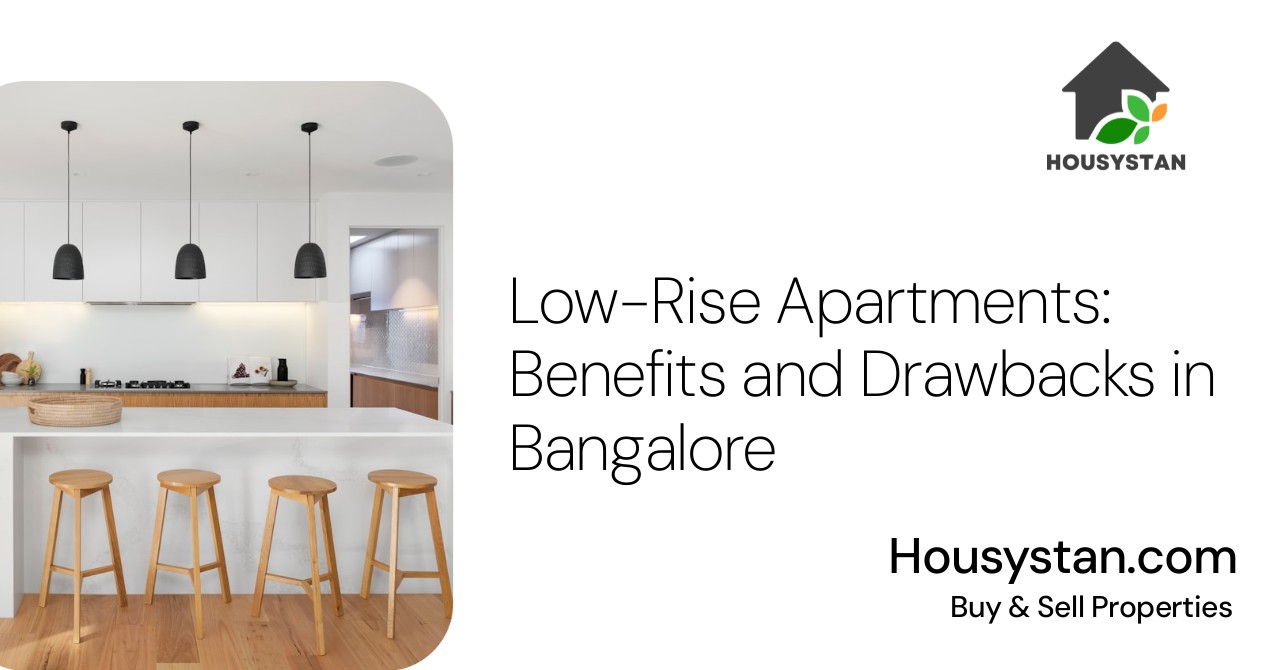Low-Rise Apartments: Benefits and Drawbacks in Bangalore
Read latest blogs and articles from Housystan

The Information mentioned here was last updated on:
31/12/2025Low-Rise Apartments: Benefits and Drawbacks in Bangalore
Bangalore, known as the Silicon Valley of India, is a city where real estate options abound. Among them, low-rise apartments have gained significant popularity in recent years. These residential buildings, typically comprising two to four stories, offer unique advantages and certain challenges to prospective homeowners and investors. Understanding the pros and cons of low-rise apartments in Bangalore can help you make an informed decision tailored to your lifestyle and investment goals.
Benefits of Low-Rise Apartments in Bangalore
- Verified Tenants/Buyers
- Unlimited Property Listing
- Zero subscription/charges fee
Choosing a low-rise apartment in Bangalore comes with notable benefits. First and foremost, these complexes often provide a peaceful and less congested living environment compared to high-rise towers. Residents enjoy reduced noise, enhanced privacy, and a sense of community that is sometimes lacking in larger developments. The limited number of units per floor fosters neighborly relations and a safer atmosphere, which is especially appealing to families and senior citizens.
Low-rise buildings in Bangalore often feature better ventilation and natural light due to their architectural design and lower density. This results in a healthier indoor environment and greater comfort throughout the year. Additionally, these properties are usually located in established neighborhoods such as Jayanagar, Indiranagar, and Whitefield, offering easy access to essential amenities like schools, hospitals, shopping centers, and public transport.
For those prioritizing outdoor space, low-rise apartments frequently include landscaped gardens, open play areas, and sometimes private terraces or balconies. These features enhance the quality of life and contribute to an active and balanced lifestyle. Maintenance costs in low-rise buildings also tend to be lower due to fewer shared facilities and a smaller number of residents sharing expenses.
Drawbacks of Low-Rise Apartments in Bangalore
Despite these advantages, there are some drawbacks to consider. Low-rise apartments in Bangalore may offer fewer luxury amenities compared to high-rise complexes. Facilities like swimming pools, gyms, and clubhouses may be limited or absent, which could be a drawback for residents seeking a modern, amenity-rich environment.
Another consideration is security. While close-knit communities often deter petty crime, the absence of advanced security features found in larger gated complexes can be a concern. Parking space is sometimes restricted, leading to inconvenience for multiple-car households.
Lastly, the resale value and rental yield of low-rise apartments in Bangalore might be lower than high-rise counterparts, particularly in rapidly developing areas where demand for modern amenities is high. Potential buyers and investors should weigh these factors against their personal preferences to make the right choice.
Conclusion
Low-rise apartments in Bangalore blend comfort, community, and accessibility, making them a preferred option for many. By carefully evaluating the benefits and challenges specific to Bangalore’s dynamic real estate market, you can select a home that meets your needs and supports your urban lifestyle.